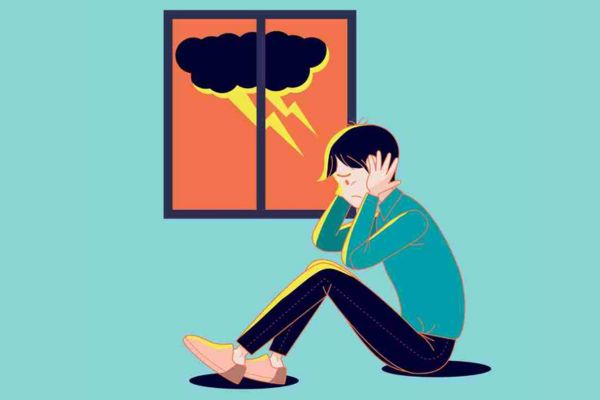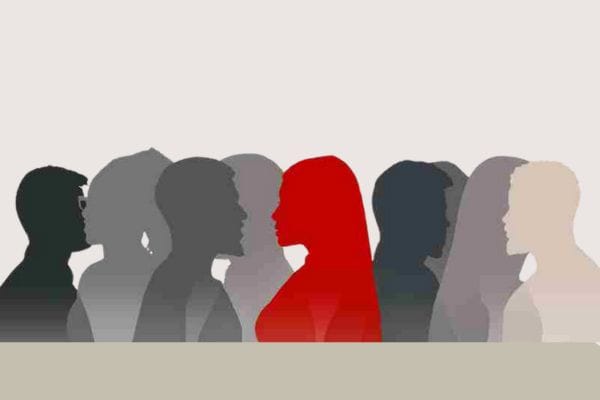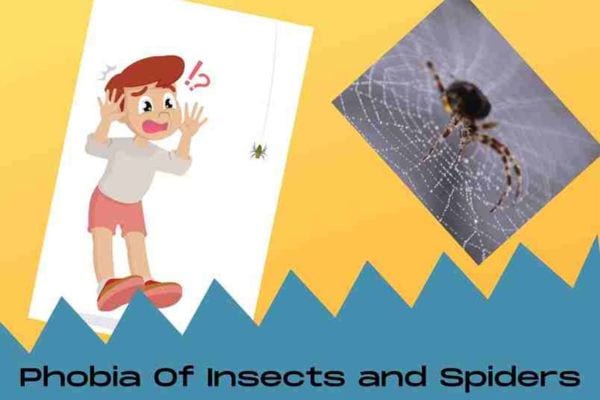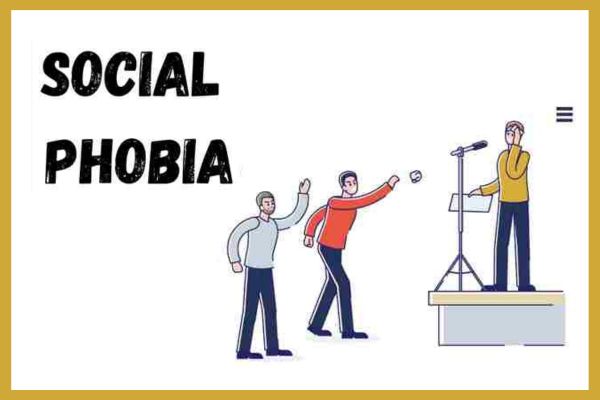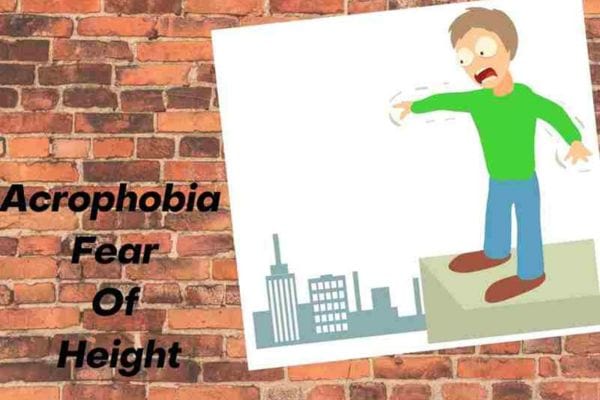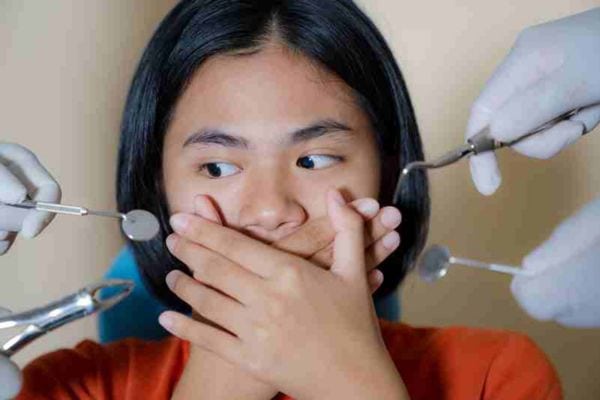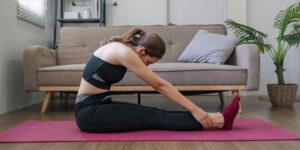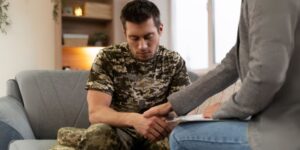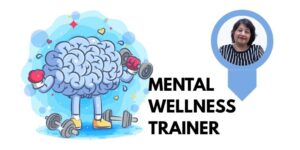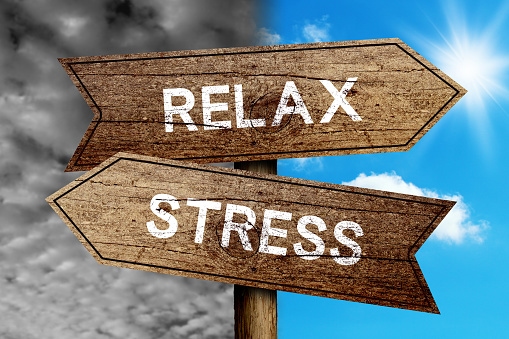Fear And Phobia: What’s The Difference?
People often confuse phobias with fears, but the former is more intense than fears and leads to severe anxiety and panic attacks when triggered. They occur when the person has an unrealistic and exaggerated fear regarding an object or a specific situation. They could include the experiencing of dread while getting in the driver’s seat, anxiety, and palpitations when on an elevated surface.
Understanding Phobia:

Phobia isn’t simply fear. It is an anxiety disorder when subjected to a particular situation or object. The individual faces symptoms when in contact with the specific phobia or even when thinking about it. Physical symptoms are also observed, such as:
– Sweating
– Lightheadedness
– Dizziness
– Palpitations/increased heartbeat
– Shivering
– Stomach upset
Specific Phobias do not interfere with everyday life as they are usually not encountered daily, whereas Complex Phobias impact everyday life. Let’s read more about them in our next session.
Types of Phobias:
Phobias are of two types. Simple phobias also called “Specific Phobias” and complex phobias.
Specific Phobias:
These arise in childhood and become less severe as the individual grows older. The source is mostly a particular situation, activity, or object that triggers anxiety. The specific phobias include:
– Environmental Phobia
– Animal Phobia (e.g. insects, spiders, snakes etc.)
– Phobia of sharp objects and needles
– Situational Phobias. Example- flying phobia, height phobia etc.
Complex Phobias:
Complex Phobia, as the name indicates, affects the person’s life more than Specific Phobia as they surround daily activities. They even develop in adults and progress from deep-rooted anxiety regarding a specific situation.
A few complex phobias include:
– Agoraphobia
– Social phobia
– Claustrophobia
Some Common Phobias and their Treatment:
Phobia of Insects like spiders:
Extreme fear of insects, named Entomophobia, is one of the specific phobias and can cause extreme anxiety and agitation when exposed to insects. Unlike a simple scare when one sees insects, a phobia includes other mental and physical symptoms:
– Immediate heightened anxiety upon seeing or thinking about an insect
– This anxiety worsens when the insect is nearby
– Even though you may know that this fear is irrational, it is not in your control.
– Trouble functioning in daily life and staying with extreme anxiety
– Stop going outdoors or doing anything that could expose them to insects
Physical symptoms can include
– panic attacks,
– increased heartbeat,
– hyperventilation,
– sweating,
-shivering,
-dry mouth, and
– crying, to name a few.
Flying:
The phobia of flying is called Aviophobia or Aerophobia. As the name indicates, it is the extreme fear experienced before or during flight. A person can inherit from parents or mirror their parents who may have this phobia or any other phobia. They can develop anytime in their lifetime due to triggering factors like a traumatic past event associated with flying. Traumatic events include turbulent flight, news of flight crashes, loss of life of loved ones on a flight and many more reasons. Research indicates that 2.5 to 40% of people every year have anxiety before flying.
There is persistent anxiety when thinking of flying, which worsens when you have to get on the plane. The symptoms of Aerophobia are the same as other specific phobias. They include:
– Choking sensation
– Chills
– Clouded thinking
– Stomach upset
– Palpitations
– Crankiness
– Nausea
– Shaking
– Breathlessness
In worse cases, the person gets a panic attack before reaching the airport while others are calm and start experiencing symptoms while boarding the plane. Do read about my client experiencing flight phobia. (Link to our hypnotherapy article)
Claustrophobia:
Claustrophobia impacts a vast number of people. People do not like to enter enclosed spaces, and their anxiety is triggered. Studies show that the percentage of women with Claustrophobia is more than men. Being trapped in a room without a window, an elevator, tube slides, and congested highways can trigger Claustrophobia.
My client worked on her phobia of elevators. Here she revealed that she mirrored her mother, who had a deeply entrenched fear of elevators. As a child, she learnt to climb stairs instead of taking elevators. She soaked in her mother’s anxiety.
Claustrophobic patients might feel like they have a panic attack and experience the following symptoms:
– Lightheadedness/dizziness
– Palpitations/raised heartbeat
– Shivering
– Sweating
– Disorientation
– Hot flashes
The symptoms can go away with time, or consistent exposure, allowing the person can lead an everyday life as they start ageing while others require therapy to cope with the symptoms.
Social Phobia:
This is a social anxiety disorder characterised by anxiety and panic attacks when interacting with people. Please read in detail present on my blog on social anxiety. Extreme fear of being judged resides in such individuals. They have many negative beliefs about themselves. They assume they are not good enough to be in a social circle, and when they speak, it will be a source of embarrassment and humiliation for them. So, they try to avoid social situations as much as possible. The anxiety of being constantly judged has a significant impact on their life as well as mental health. In severe cases, it can cause disruptions in everyday tasks.
The symptoms of social phobia are the same as the other phobias:
– Sweating
– Lightheadedness
– Dizziness
– Palpitations/increased heartbeat
– Shivering
– Stomach upset
Agoraphobia:
One of the types of complex phobias, agoraphobia, is the fear of getting trapped in a place with no way out. The individual experiences a panic attack in crowded places, buses, theatres where they might believe it is difficult to escape. Agoraphobia might make them avoid such areas altogether.
The physical symptoms are the same as the other specific phobias:
– Lightheadedness/dizziness
– Palpitations/raised heartbeat
– Shivering
– Sweating
– Disorientation
– Hot flashes
Acrophobia:
Acrophobia, in simple words, known as fear of heights, is the anxiety faced when in an elevated position such as a high building or a bridge. Even rides like the Ferris wheel seem scary and panic the acrophobic person.
The most common symptom of Acrophobia is vertigo which patients describe as a spinning sensation. The other symptoms are:
A person gets down on all four limbs to protect themselves.
– Shaking, trembling, and sweating
– Nausea
– Dizziness
– Crying/yelling
– Breathlessness
– Headache
Dentophobia:
Denotophobia is the fear of dentists. Usually, a dental phobia can be due to various elements like Iatrophobia (phobia of doctors) or Trypanophobia (phobia of needles). It can make the person avoid dental appointments leading to health defects due to missed checkups.
Specific phobias, as mentioned earlier, go away as time proceeds, but sometimes they linger in adulthood as well, and therapy is needed to manage the symptoms and control the anxiety. Hypnotherapy is one of the methods proven to be adequate to address phobias. Hypnotherapy helps address phobias in a few sessions.
Hypnotherapy for Phobias
Phobias are irrational. Our subconscious mind controls our fears, and no matter how much we try to convince ourselves that the fear is irrational and try to control it, the body and mind still react when it comes in contact with the source of the phobia. Phobias are deeply embedded in the physical body, and it is an automated response from our brain.
Phobias are treatable when there is communication with our subconscious to reprogram or change the embedded programs. The goal is to give messages to the subconscious mind in a relaxed state of mind. Research says hypnotherapy is an effective adjunct therapy to treat phobias effectively.
Hypnotherapy changes how the person feels and behaves when exposed to the source of their phobias in their imagination when the person is relaxed. It includes:
Regression Therapy for Phobias
Regression is the first step in which the patient is relaxed and put in a hypnotic state. The hypnotherapist then talks to the patient and tries to make him remember what caused the phobia in the first place. Regression will usually involve people picturing their younger selves, back to when their phobia was triggered. Sometimes the main event can’t be remembered by the patient. Some options available to the therapist are:
- Make them remember the time when they first felt the phobia triggered
- To work with perceived memories
- Ask their subconscious mind to search and reveal the triggering event.
Regression finds out the main event that led to phobia development, but it alone may not treat the phobia. However, in many cases, clients can visualise the past event in a relaxed frame of mind. Relaxation helps them to make changes to their perception of their trauma and eventually heal from them.
As a psychotherapist, I like to work with EMDR therapy and Brainspotting therapy instead of regression therapy. I have evidenced powerful healings.
Systematic Desensitisation Therapy for Phobias
Joseph Wolpe developed a systematic desensitisation technique in the 1950s, a form of exposure therapy.
I use this therapy under hypnotherapy to get excellent results for my clients.
Two diagonally opposite emotions cannot exist in the same space together at the moment. Either you can be very relaxed or very anxious. You cannot be relaxed and anxious at the same time. Hypnotherapy uses this principle to heal a person from phobias.
A person will usually spend a session or two describing different degrees of phobias. The description will usually include some description and the scale of anxiety. For example, a person with a fear of dogs may have the least anxiety when they are in another country. And the person may have extreme anxiety if the dog is in their house.
The hypnotherapist will take the client through different anxiety levels, starting from the very least and moving step by steps towards the maximum anxiety. The client visualises the various anxiety-provoking situations under a relaxed state of mind.
The sub-conscious brain thinks of visualisation as if it’s happening in reality. Do check my lemon-test video.
Hypnotherapy helps to reprogram the brain that it’s ok to face their phobias and they are safe. Though it is exposure therapy, it is done under visualisation and in a relaxed state of mind. This relaxed state of mind ensures the person is not re-traumatised.
Let’s walk through a small example.
Example:
In case of phobia of flight, I may ask my client to list the triggers of anxiety intensity from 10 to 1. 10 being the least amount of anxiety.
10. I am not flying at all.
9. I have a business trip coming up in three weeks
8. I am busy with my work, and the trip is two weeks away
7. It’s the night before the flight, and I have started packing
6. I call for a cab to go to the airport
5. I arrive at the airport
4. I clear immigration
3. I walk towards the flight
2. I am sitting inside the flight
1. Flight is ready to take off, and everything after that is a nightmare.
The above list sounds simple. But it can take us at least two sessions to discuss and come up with the list. Next, we start hypnotherapy. Some clients may race through all their triggers in one or two sessions, while others may need more sessions and other resources. They may need extra inputs like learning to breathe or listening to relaxing music, and so much more.
However, they journey through their phobias to heal and lead a healthy lifestyle.
If you are interested in working through your phobias, do book a session with me.
REFERENCES:
- https://www.hypnotherapy-directory.org.uk/topics/phobias.html#understandingphobias
- https://welldoing.org/article/hypnotherapy-cure-phobias
- https://www.verywellmind.com/dentophobia-fear-of-dentists-2671855#:~:text=Dentophobia%20(odontophobia)%2C%20or%20fear,lead%20to%20serious%20health%20issues.
- https://my.clevelandclinic.org/health/diseases/21956-acrophobia-fear-of-heights
- https://www.statpearls.com/ArticleLibrary/viewarticle/35883
- https://www.verywellmind.com/aerophobia-fear-of-flying-2671844
- https://www.londonhypnotherapyuk.com/glossary-systematic-desensitization/
- https://www.simplypsychology.org/systematic-desensitisation.html
-
What Is Agoraphobia? – https://www.verywellmind.com/agoraphobia-101-2584235


